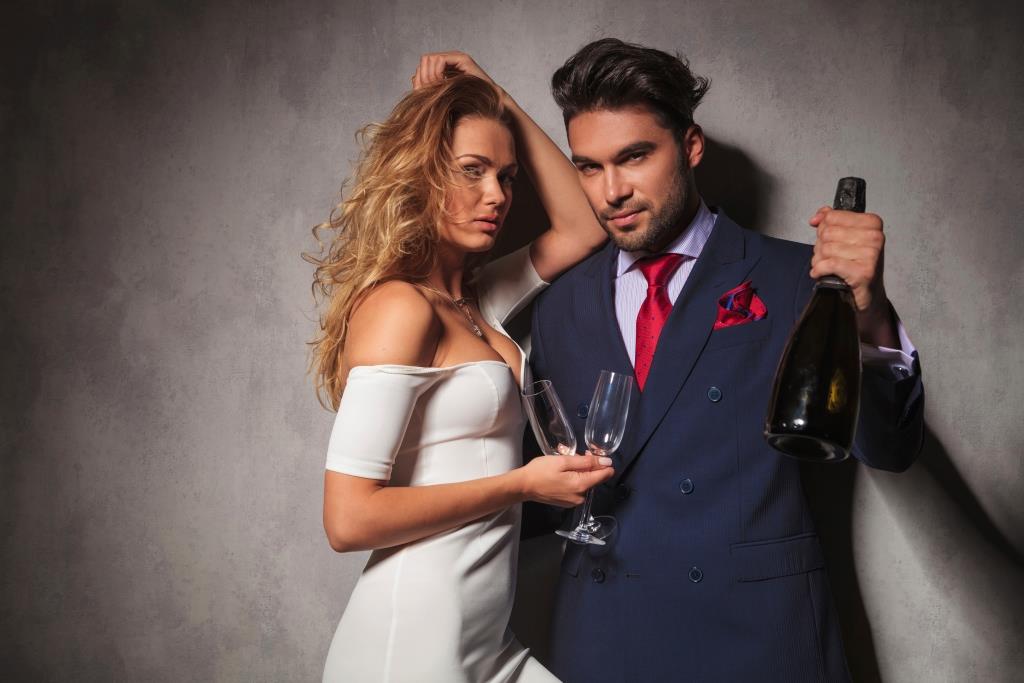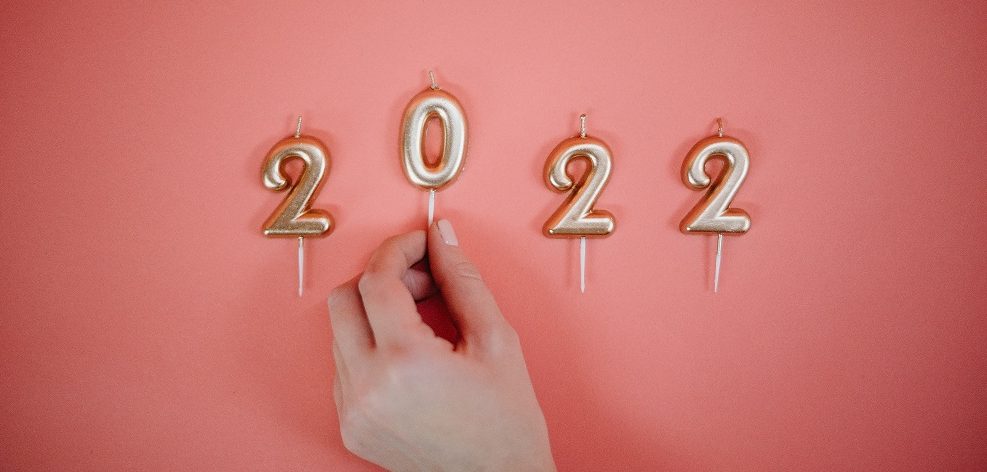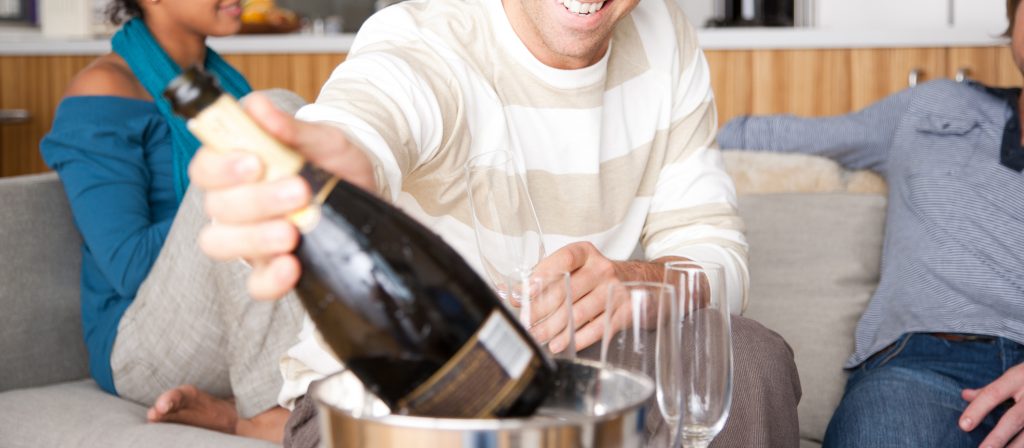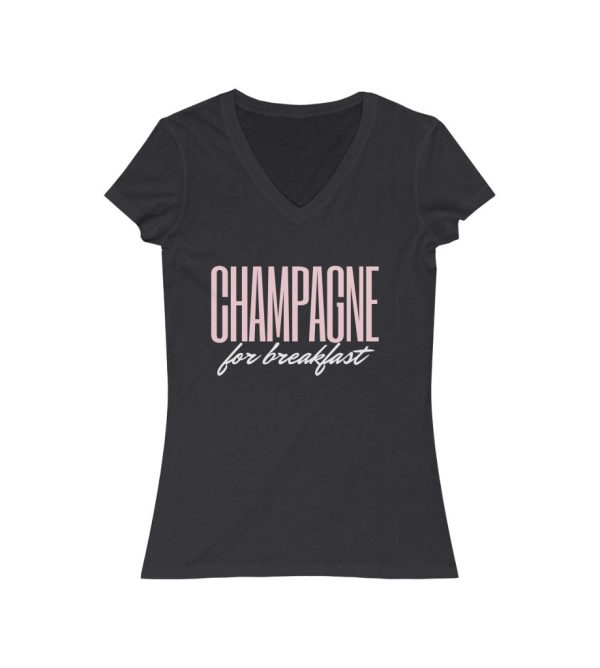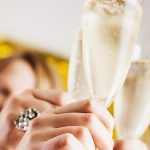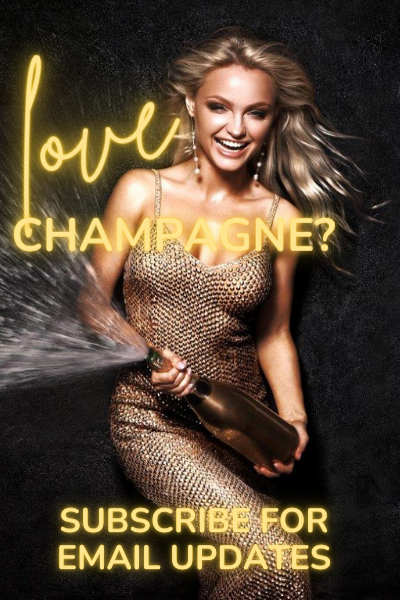
Top Five Summer Champagnes
I live on the Gold Coast in Queensland, Australia, where it is summer about 6 months of the year… lucky me!
It is a great climate but, particularly in February, it can be really humid and your champagne almost boils or evaporates in your glass after just a few minutes in the sun.
But because of our long, hot summer, this was an easy post to write because I’ve had plenty of practice drinking summer champagnes to put this list together.
I know it’s not summer everywhere but there is a champagne for every season and occasion so if it’s not summer where you are right now make sure you check out my recommendations for the other seasons here…
Top five champagnes for summer
Because of the summer heat, this list is big on fresh, bright chardonnay-driven champagnes that are low in dosage to enjoy in the warm sunshine or the searing heat.
This is what I’ve been drinking this summer but I also recommend My Top Five Beach Champagnes for more summer champagne options.
1. Piper-Hiedsieck Essentiel Blanc de Blancs
I first tried this new release from Piper-Heidsieck a few years ago on the Australia Day long weekend and I was very pleasantly surprised. I never used to drink a lot of Piper Heidsieck but it is my sister-in-law, Deb’s, fave house and we were going away for her 40th birthday so I decided to surprise her with a new option from her fave. Piper-Heidsieck has had a few changes in Chef de Caves in the last few years and they have introduced a new line of champagnes that are really very impressive, including this blanc de blancs.
We did have a pretty epic selection of chardonnay-driven champagnes to sample over the long weekend because the weather was particularly hot. I have to admit…. I wasn’t taking this bottle very seriously. It was the first bottle we popped the afternoon we first arrived while we were just messing about but to my delight, it was really good.
In the glass it was a really pale colour – less golden, more a hint of light green – and on my first smell there was a really strong smell of coconut! I was pretty shocked to smell coconut in a champagne and while I was processing this as a “WTF?”, my brother piped up and said “I smell coconuts too… in Deb’s sunscreen!”. My sister-in-law had just applied her coconut-scented sunscreen and that was dominating the air around me!

Actual poolside pics complete with rose all day floatation device
Funny story but also a good lesson…. it can be hard smelling and tasting wines outside. We were poolside, on the water (they were man-made canals at Broadbeach Waters but we were close enough to the beach to smell the sea and the salt), with pot plants (and sunscreen!) all around us and that does affect your champagne tasting.
So I moved inside for a proper tasting where it was all lemony limestone with some hints of fresh bread. And my second glass was all crunchy green apples. This first experience has cemented the Piper-Heidsieck Blanc de Blancs as our family poolside coconut champagne and I feel obliged to pop it again this year with my brother and sister-in-law.
You can find this champagne in most big retailers in Australia for about $75.
The technical details
The Blend
100% Chardonnay, almost 100% grand cru
Terroir – mostly Côte des Blancs
Dosage – 4 g/l
Aged – 3.5 years on lees
Reserve wines – 35%
Fermentation – Stainless steel vats
Total annual production – total house production is about 4 million bottles
Bubble & Flute Champagne Style* – Fresh & Crisp
2. De Sousa Grand Cru Reserve Blanc de blancs
I have tried (and loved!) all of the wines in the De Sousa range after I met Charlotte De Sousa at her family winery in Avize in June, 2018.
Avize is in the heart of the Côte des Blancs area of Champagne, the homeland for chalky, fresh, crisp, chardonnay dominant champagnes.
The chalk in the soil in and around Avize runs deep… and the roots of the De Sousa vines grow 40 metres down into the chalk, imparting a minerality and clarity to the wines that I immediately fell in love with. A small producer, the family makes about 85,000 bottles of champagne a year and it is one of a tiny number of certified biodynamic champagne producers in the entire region.
100% chardonnay and 7g/l dosage, this is a classic summer champagne. With grapes selected from 100% grand cru villages, this wine has a precision and purity that I just love – a very fresh, vibrant but complex champagne.

The technical details
The blend – 100% Grand Cru Chardonnay
Terroir – Cramant, Avize, Oger, Mesnil sur Oger and Chouilly
Viticulture – Organic and biodynamic
Fermentation – In stainless steel tanks and 8% in oak barrels; partial malolactic fermentation
Reserve wines – 30%
Dosage – 7 g/l
Total annual production – approx. 100,000 bottles
When in stock, available from Emperor Champagne for about $100 a bottle.
3. Franck Bonville Prestige Blanc de Blancs Grand Cru
When you drink a lot of champagne (as I do) it takes something special to add to my list of favourites.
Tasting the Franck Bonville Prestige Blanc de Blancs Grand Cru was one of those champagnes that stood out from the first sip to the last. The style of the house is for fresh, chalky champagnes which Frank Bonville seems to achieve with distinction.
It may be due in part due to the elimination of herbicides and pesticides, as his 77 plots were granted High Environmental Value certification 2016.

The technical details
The blend – 100% Grand Cru Chardonnay
Terroir – Avize
Viticulture – High Environmental Value certification granted in 2016
Fermentation – Alcoholic and malolactic fermentations in stainless steel tanks
Aged – 4 years on lees
Reserve wines – 50%
Dosage – 6 g/l
Total annual production – approx. 30,000 bottles
Available from Emperor Champagne for about $90 a bottle.
4. Larmandier-Bernier Latitude Extra Brut & Longitude Premier Cru Extra Brut
Larmandier-Bernier champagnes receive high praise from champagne wine experts. Based in Vertus, in the heart of the Côte des Blancs, they are known for their chardonnay.
I am including two wines here from their range because you almost can’t separate them – the Latitude Extra Brut and the Longitude Premier Cru Extra Brut.
When I first tried the Latitude Extra Brut alongside the Longitude Premier Cru Extra Brut I was having a champagne geek weekend away with a friend and fellow champagne lover. I wrote about it in an Instagram post at the time so I am going to quote myself here…
“OMG! That was insane … @larmandier.bernier longitude and latitude side by side. Incredible to study the nuances and differences between two champagnes that are both NV & 100% chard, same time on lees, both 4g/l dosage, 30 or 40% from the perpetual reserve from the same producer, just different villages/terroir. Such different champs and so much fun being a champagne geek with Topaz. There are so many dimensions to each wine that rolled out over the time we served each. We flip-flopped over our preferences 10 times and ultimately adored them both but the Latitude finished ahead by a nose for me. We found crisp pear in the lat and salted caramel in the long as the the most defining characteristics. Minds blown, in 
I don’t know that I need to say much more do I?
But I will 
Larmandier-Bernier:
- excel at chardonnay – 90% of their grapes are chardonnay
- they use grapes from only premier cru and grand cru villages in the Côte des Blancs (Grand Crus: Cramant, Avize, Oger and Premier Cru: Vertus)
- they are a biodynamic producer
- all low dosage to let the wine and terroir shine through
Their motto… “Good champagnes conform to the rules. Really great champagnes often break them!”


What differentiates the Longitude from the Latitude is where the chardonnay grapes are sourced from.
While the Latitude’s grapes are all sourced from the southside of Vertus, the Longitude uses chardonnay grapes exclusively grown in villages in the Côte des Blancs which form a line close to the 4th meridian. – Vertus, Oger, Avize, Cramant,
The technical details Latitude Extra Brut
The blend – 100% Chardonnay
Terroir – all come from the same “latitude”: the south of Vertus.
Reserve wines – 40% from the estate’s perpetual reserve started in 2004
Dosage – 4 g/l
Aged – 2 years on lees
Fermentation – wild fermented and matured until July in oak casks and vats
Total annual production –150,000 bottles in total from the producer across all cuvées
Bubble & Flute Champagne Style* – Fresh & Crisp

Available from Emperor Champagnes for $155 a bottle
The technical details Longitude Premier Cru Extra Brut
The blend – 100% Chardonnay
Terroir – exclusively from the Chardonnay grapes grown on the Côte des Blancs: Vertus, Oger, Avize, Cramant, which form a line close to the 4th meridian.
Reserve wines – 40% from the estate’s perpetual reserve started in 2004
Dosage – 3 g/l
Fermentation – wild fermented and matured until July in oak casks and vats
Total annual production –150,000 bottles in total from the producer across all cuvées
Bubble & Flute Champagne Style* – Fresh & Crisp

$110 from Nicks
5. Le Brun de Neuville
I have saved Le Brun de Neuville for last because it is a bit of an outlier on this list, not originating from the classic Côte des Blancs terroir. I first tried the range a few years ago and really enjoyed the wines. Just recently they have re-launched their collection with an all-new range of cuvées and labels, I tried most of the new range at a tasting event earlier this year and was equally enamored.
So while I have written this based on the Authentique Blanc de Blancs, it is not in the new collection and may be hard to find BUT the principles of their winemaking still apply across the new range which is all chardonnay-led and really interesting.
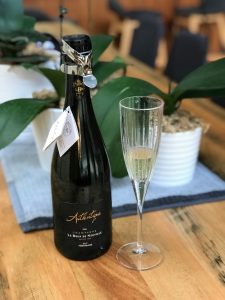

The Assemblage pictured above left is 75% chardonnay and 25% pinot noir.


Two cuvées from Le Brun de Neuville’s older range
The Le Brun family vineyards are found in the village of Bethon, close to the town of Sézanne, in the Cote de Sézanne. The vineyard Le Brun de Neuville is spread over 150 hectares, of which the majority has been planted for over 30 years on the undulating slopes of the Sézannais. Its vineyard is planted predominantly in Chardonnay, which represents 88% of the total. The Pinot Noir accounts for 11% and the Meunier just 1% of the vines.
The location of the vineyards and the terroir make these wines really interesting and exciting. Being located in the Côte de Sézanne – not the famed chardonnay heartland of the Côte des Blancs – the expression in this region is richer and rounder and may not have the same ageing capacity as the champagnes of the Grand Cru villages of Côte des Blancs. The Cote de Sézanne rests on a bed of chalk covered with a few centimeters of earth made up of granules of calcite. Its high porosity makes it a real reservoir of water ensuring the vines have sufficient supply, even in the driest summers. The Brun de Neuville vineyard is planted on a hillside that allows it to accumulate large amounts of solar energy.
The grapes tend to be riper resulting in more forward and fruitier champagnes than those from the Côte des Blancs but still rate as a summer champagne.
The technical details for the Authentique Blanc de Blancs
The blend – 100% Chardonnay, (including 8% on oak)
Terroir – Sézanne
Fermentation – 92% in stainless steel tanks and 8% in oak barrels; partial malolactic fermentation
Reserve wines – 20%
Aged – 4 years on lees under cork.
Dosage – Brut 6 g/l
Total annual production – 6950 bottles
Available from Emperor Champagne for $110 a bottle.
That’s a wrap on my top five summer champagnes.
Try these champs and let me know what you think! Or what champagnes do you drink in summer? Comment below or over on the socials tagging @bubbleandflute #bubbleandflute #happychamper
*Bubble & Flute Champagne Style Guide
After more than a decade of champagne tastings with everyone from beginners to fully-fledged champs-snobs, I have developed a theory that everyone has a basic, favourite style of champagne they’ll always choose over everything else.
I have developed my Bubble & Flute Champagne Style to reveal your champagne style and suggest more champagnes to try, based on your style, that I think you are totally going to love!
Once you know your champagne style, you will visit wine shops or shop online feeling more confident and comfortable selecting new champagnes because you know and understand what style of champagnes you like most.
My Top 5 Fantasy Valentine’s Day Dates And The Champagnes We’d Pop
My Top Five Special Occasion Champagnes
My Top Five Champagne Predictions for 2022
My Top Five Everyday Champagnes
My Top Five Beach Champagnes
My stand out champagnes from the last five years
My Top Five Party Champagnes
My top five winter champagnes
Christmas Champagne Gift Guide For The Champagne Obsessed
My Top Five Autumn Champagnes (2021)
Bubble & Flute promotes the responsible consumption of alcohol for individuals of legal drinking age in their country.
